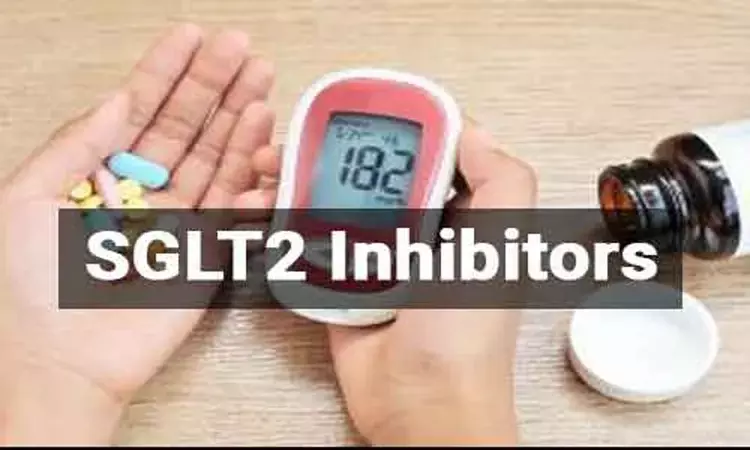- Home
- Medical news & Guidelines
- Anesthesiology
- Cardiology and CTVS
- Critical Care
- Dentistry
- Dermatology
- Diabetes and Endocrinology
- ENT
- Gastroenterology
- Medicine
- Nephrology
- Neurology
- Obstretics-Gynaecology
- Oncology
- Ophthalmology
- Orthopaedics
- Pediatrics-Neonatology
- Psychiatry
- Pulmonology
- Radiology
- Surgery
- Urology
- Laboratory Medicine
- Diet
- Nursing
- Paramedical
- Physiotherapy
- Health news
- Fact Check
- Bone Health Fact Check
- Brain Health Fact Check
- Cancer Related Fact Check
- Child Care Fact Check
- Dental and oral health fact check
- Diabetes and metabolic health fact check
- Diet and Nutrition Fact Check
- Eye and ENT Care Fact Check
- Fitness fact check
- Gut health fact check
- Heart health fact check
- Kidney health fact check
- Medical education fact check
- Men's health fact check
- Respiratory fact check
- Skin and hair care fact check
- Vaccine and Immunization fact check
- Women's health fact check
- AYUSH
- State News
- Andaman and Nicobar Islands
- Andhra Pradesh
- Arunachal Pradesh
- Assam
- Bihar
- Chandigarh
- Chattisgarh
- Dadra and Nagar Haveli
- Daman and Diu
- Delhi
- Goa
- Gujarat
- Haryana
- Himachal Pradesh
- Jammu & Kashmir
- Jharkhand
- Karnataka
- Kerala
- Ladakh
- Lakshadweep
- Madhya Pradesh
- Maharashtra
- Manipur
- Meghalaya
- Mizoram
- Nagaland
- Odisha
- Puducherry
- Punjab
- Rajasthan
- Sikkim
- Tamil Nadu
- Telangana
- Tripura
- Uttar Pradesh
- Uttrakhand
- West Bengal
- Medical Education
- Industry
Dapagliflozin improves myocardial reserve flow in type 2 diabetes patients: DAPAHEART Trial

SGLT-2 inhibition in type 2 diabetes patients increases myocardial flow reserve (MFR).
ITALY: According to a recent study published in the journal Cardiovascular Diabetology, myocardial reserve flow in Type 2 Diabetes patients is enhanced by SGLT-2 inhibition, and due to their higher myocardial flow reserve (MFR), which is most likely brought on by a reduction in coronary microvascular dysfunction, these people are less susceptible to the harmful consequences of obstructive coronary atherosclerosis.
A higher cardiovascular (CV) risk is linked to type 2 diabetes (T2D). Extensive CV outcome studies in T2D patients have demonstrated that sodium-glucose cotransporter-2 inhibitors (SGLT-2i) have positive cardioprotective effects, irrespective of existing atherosclerotic CV disease or a history of heart failure (HF), with a decrease in significant adverse CV events and CV mortalities. The mechanisms underlying these advantages are not entirely known yet.
The researchers aimed to study the effects of Dapagliflozin, an SGLT-2 inhibitor, on myocardial perfusion and glucose metabolism in individuals with T2D and stable coronary artery disease (coronary stenosis between 30% and 80%), with or without prior percutaneous coronary intervention (> 6 months), but no heart failure (HF).
16 T2D patients were randomly assigned to receive the SGLT-2i Dapagliflozin (10 mg daily) or a placebo in a single-center, prospective, randomized, double-blind, controlled clinical trial. The groups were well-matched in terms of baseline characteristics (age, diabetes duration, HbA1c, renal and heart function). The main objective was to determine changes in myocardial glucose uptake (MGU) using [(18)F]2-deoxy-2-fluoro-D-glucose (FDG) PET/CT during hyperinsulinemic-euglycemic clamp from baseline to 4 weeks following therapy commencement. The principal secondary endpoint was to see if the suppositionally altered MGU was related to altered myocardial blood flow (MBF) and myocardial flow reserve (MFR), as determined by 13N-ammonia PET/CT.
Key highlights of the study:
- In the dapagliflozin group (2.22 ±0.59 vs 1.92± 0.42 mol/100 g/min, p = 0.41) compared to the placebo group (2.00± 0.55 vs 1.60 ±0.45 mol/100 g/min, p = 0.5), there was no difference in MGU during the euglycemic hyperinsulinemic clamp.
- In comparison to the placebo group (2.34 ± 0.21 vs 2.38 ± 0.24 p = 0.81; pint = 0.001), dapagliflozin significantly increased MFR (2.56 ±0.26 vs 3.59± 0.35; p = 0.006), which was accompanied by a decrease in resting MBF adjusted for cardiac workload (p = 0.005; pint = 0.045).
- Additionally, a trend towards increased stress MBF was seen (p = 0.054).
- After treatment, HbA1c reduced considerably in the dapagliflozin group (7.8 ± 0.2% vs 7.1± 0.2%, p = 0.0003).
"Despite not being linked to MGU changes, our revelation of a significant improvement in MFR and resting MBF in T2D patients after SGLT-2i does not rule out the metabolic hypothesis of a substrate shift in favor of ketones or an increase in free fatty acid (FFA) utilization that may be linked to an improvement in myocardial perfusion," asserted the investigators.
The authors concluded that in patients with T2D who do not have obstructive coronary artery disease, dapagliflozin therapy does not affect myocardial glucose uptake, but it significantly increases myocardial flow reserve.
REFERENCE
Leccisotti, L., Cinti, F., Sorice, G.P. et al. Dapagliflozin improves myocardial flow reserve in patients with type 2 diabetes: the DAPAHEART Trial: a preliminary report. Cardiovasc Diabetol 21, 173 (2022). https://doi.org/10.1186/s12933-022-01607-4
Dr Kamal Kant Kohli-MBBS, DTCD- a chest specialist with more than 30 years of practice and a flair for writing clinical articles, Dr Kamal Kant Kohli joined Medical Dialogues as a Chief Editor of Medical News. Besides writing articles, as an editor, he proofreads and verifies all the medical content published on Medical Dialogues including those coming from journals, studies,medical conferences,guidelines etc. Email: drkohli@medicaldialogues.in. Contact no. 011-43720751


